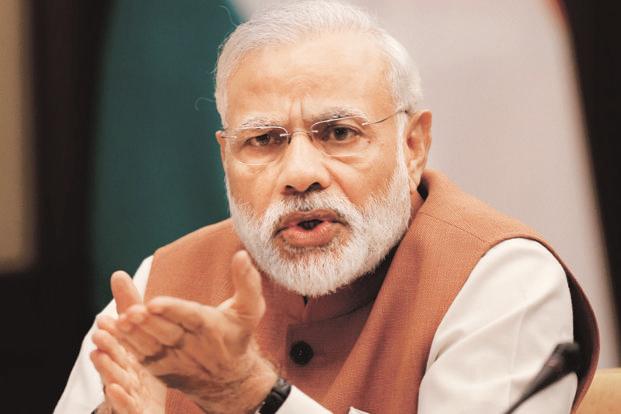India’s First Moody’s Upgrade in 14 Years Bets on Reforms
By Enda Curran , Anirban Nag , and Manish Modi
Rupee and government bonds rally, stock markets surge
Moody’s says reforms reduced risk of sharp increase in debt
Why Moody's Raised India's Credit Rating
Moody's Upgrades India For First Time Since 2004
Morgan Creek's CEO Says U.S. Tax Reform Bill Is Terrible
Why Moody's Raised India's Credit Rating
Moody’s Investors Service raised India’s sovereign rating for the first time since 2004, overlooking a haze of short-term economic uncertainties to bet on the nation’s prospects from a raft of policy changes by Prime Minister Narendra Modi.
Rupee, bonds and stocks rallied after the ratings firm upgraded India to Baa2 from Baa3 and said reforms being pushed through by Modi’s government will help stabilize rising levels of debt. That’s a one-level shift from the lowest investment-grade ranking and puts India in line with the Philippines and Italy.
While government officials hailed the move as long overdue, some investors termed it a surprise given that India recently surrendered its status as the world’s fastest-growing major economy amid sweeping policy change. The upgrade could prove to be a big win for the ruling party, which is facing increasing attacks about the economic slowdown before key elections in Modi’s home state next month and a national vote early 2019.
The upgrade "reflects willingness of Moody’s to look beyond the transitory disruptive effects of difficult reforms," said Sumedh Deorukhkar, a Mumbai-based senior economist at Grupo BBVA. However, he said there must be "caution that several challenges for the economy, particularly a high debt burden and delayed labor and land acquisition reforms leaves little room for fiscal complacency, especially ahead of 2019 elections."
The rupee surged as much as 1 percent and was trading up 0.6 percent at 64.92 per dollar as of 1:51 p.m. in Mumbai on Friday. The benchmark equity index rose 1 percent and the yield on the 10-year sovereign bond tumbled 10 basis points to 6.97 percent.
The upgrade will lower borrowing costs for India’s government and companies, according to Nischal Maheshwari, head of institutional equities at Mumbai-based brokerage Edelweiss Securities Ltd. While rating companies may have lost some of their allure globally following the 2008 financial crisis, their assessments are still seen as a stamp of credibility for emerging markets where national statistics can often be dodgy.
Read: Moody’s Upgrade Is Christmas Come Early for Modi
The upgrade "makes a big difference to investors," said Avinash Thakur, managing director of debt capital markets at Barclays Plc. "We will see more dollar bond supply from India, like more public sector undertakings would be printing.”
Big Question
The question now is whether S&P Global Ratings and Fitch Ratings will follow, according to Nomura Holdings Inc., which expects the companies to wait for the government’s fiscal position before making any changes. The view is echoed by economist Gaurav Kapur at IndusInd Bank Ltd. -- who says they’ll wait until the budget announcement expected Feb. 1.
Fitch and S&P declined to comment on Moody’s action, and S&P reiterated Oct. 24 comments that "for an upgrade, India would have to address its weak fiscal balance sheet and weak fiscal performance." Both companies now rate India a notch below Moody’s.
Moody’s move "is an overdue correction,” said Modi’s Chief Economic Adviser Arvind Subramanian. "This is a recognition of India’s macro economic reforms. But it has also to be kept in mind that these are external factors. And the government will pursue its own reform agenda. And those will drive our economic development."
Moody’s action was in line with the Bloomberg Economics model -- which predicted an upgrade based on the divergence between actual ratings and CDS implied credit ratings -- and could tip the balance toward a rate cut when the central bank decides on policy Dec. 6, according to Bloomberg economist Abhishek Gupta. The Reserve Bank of India didn’t immediately reply to an email and text message seeking comment.
Mixed Results
Modi has pushed through sweeping reforms, with mixed results. Moody’s acknowledged that the cash ban and goods and services tax have undermined growth in the near term. In the longer term, however, the GST will promote productivity by removing barriers to interstate trade, Moody’s said, also citing Modi’s improvements to the monetary policy framework, measures to clean up bad loans, and efforts to bring more areas into the formal economy.